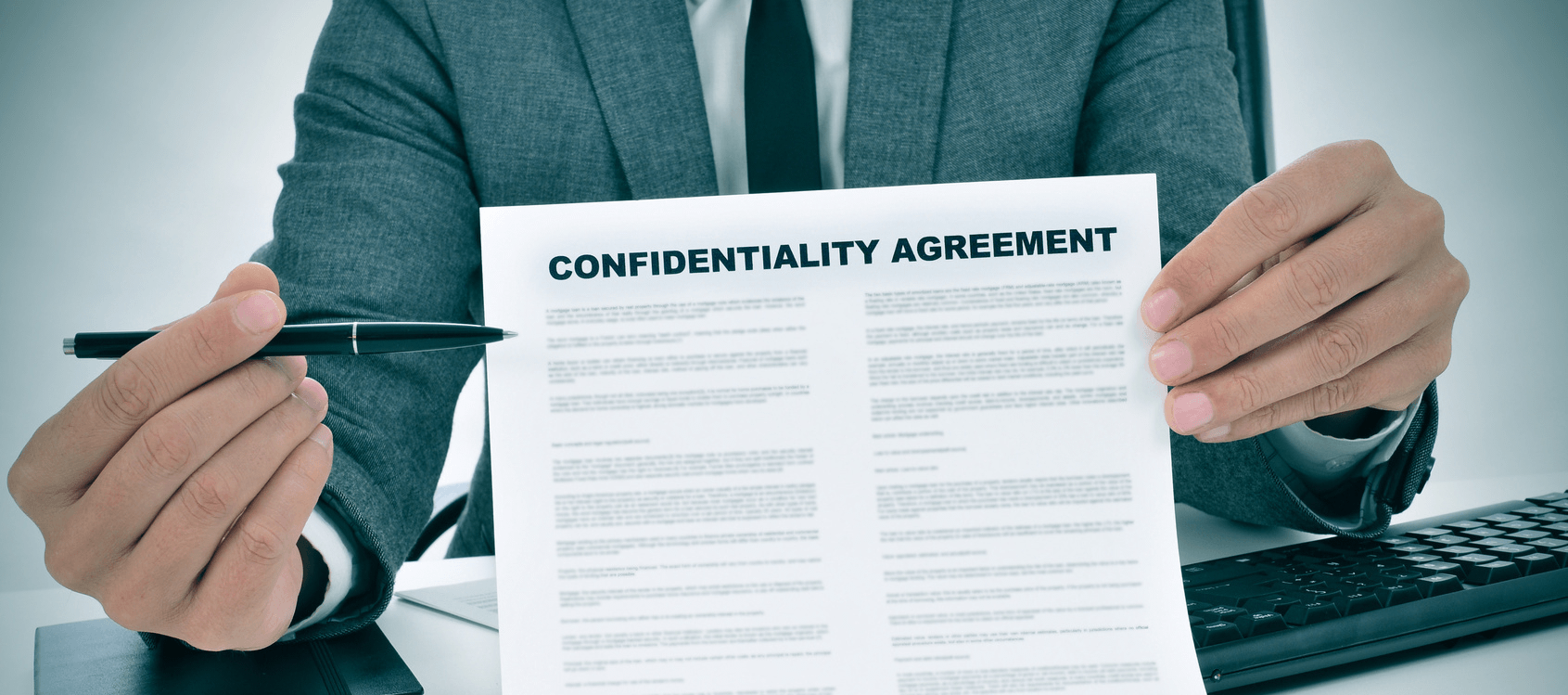
by Paige Pembrook
April 3, 2015
In the 21st century information economy, preserving and protecting confidentiality is vital.
Addressing this need, confidentiality agreements (also called non-disclosure agreements) come into play whenever an individual or company with secret information wishes to disclose the information to another while making sure that it remains protected and retains its optimal value.
Consequently, all business professionals, employees, and consumers should know where to expect confidentiality agreements, what basic terms to expect from all confidentiality agreements and when confidentiality agreements cannot be enforced against them.
Common Scenarios
There are many situations where a confidentiality agreement is appropriate and may be proposed.
These agreements most frequently arise in business negotiations, commercial services and employment agreements and terms of access to exclusive locations and events.
When a company or individual wants another’s evaluation of a secret process, product, or idea (i.e., for product development advice, investment purposes, or licensing) the company or individual disclosing that secret (the “discloser”) will generally have the person receiving the information (the “recipient”) sign a confidentiality agreement.
The promise to maintain confidentiality tends to be unilateral, meaning that it only binds the recipient and not the discloser.
However, the discloser remains obligated to use reasonable efforts to keep the information confidential.
Commercial Services Agreements:
When a company or individual needs assistance on a project involving a secret process, product, or idea, a confidentiality agreement is usually a part of the relationship.
Almost all employees, independent contractors, suppliers, and advisors are also subject to such agreements when engaging with a business entity.
The complexity of the agreements will depend on the complexity of the relationship and sensitivity of the information.
Apple’s extensive non-disclosure agreements are an example of confidentiality agreements addressing highly technical and commercially valuable information. Apple’s confidentiality agreements have required suppliers to use code names when referring to Apple or the project, among other terms.
Personal Services Agreements:
Someone requiring assistance involving access to their private, personal information (as is the case with personal assistants and home developers) may insist on a confidentiality agreement.
Many people are going to extraordinary lengths to keep their personal affairs secret by using “domestic non-disclosure agreements.”
For example, Facebook founder and CEO, Mark Zuckerberg, insists that workers on his home development project sign nondisclosure agreements as a term of their contractual relationship.
Confidentiality agreements are also common as a term of access to private locations, events, and group memberships.
Such agreements may be imposed as a condition of access to commercial property or private property.
For example, Kanye West and Kim Kardashian filed suit in Los Angeles Superior Court to enforce a written agreement signed by all quests at their proposal party, after one such guest published the event.
Important Terms
All confidentiality agreements should, at a minimum, define confidential information, clearly state the limitations on disclosure and use of information and provide time periods during which disclosures will be made and confidentiality will be maintained.
The Definition of Confidential Information:
Confidentiality agreements define what information can and cannot be disclosed.
This is usually accomplished by language classifying categories information as confidential or proprietary, accompanied by non-exhaustive lists of examples.
Exclusions from Confidential Information:
All comprehensive confidentiality agreements exclude some types of information from the definition of confidential information.
Some commonly employed exceptions are information that the recipient can demonstrate that they had prior to receipt from the discloser, information that becomes public knowledge through no fault of the recipient, and information that becomes known to the recipient from a third party that has the right to disclose the information.
Limitations on the Disclosure and Use of Confidential Information:
Generally, the recipient of confidential information promises not to disclose the information without authorization.
The confidentiality agreement can also limit each party’s use of the confidential information.
For example, the confidentiality agreement can specify that the confidential information is to be used only to evaluate the discloser’s product and cannot be used in the recipient’s business.
Time Periods for Disclosure and Confidentiality:
The agreement must establish both (a) the period during which disclosures will be made and (b) the period during which confidentiality of the information is to be maintained.
This term is especially important when the disclosure is a trade secret.
If a trade secret is disclosed under a confidentiality agreement which says the obligation of non-disclosure and non-use expire after some period of time, courts have indicated that having such expiration periods provide evidence that the trade secret owner is not exercising reasonable efforts to maintain the secrecy of the information.
Consequences of Breaching:
Whenever one or more participants breaches a promise not to disclose such sensitive information, the injured party may bring a suit for breach of contract to seek injunctive and monetary damages.
No special term is required for the breach to be actionable, but a term may be included to impose specific, heightened penalties.
In an extreme example, Apple’s supplier contracts have included a $50 million penalty for each leak of future product information, providing a costly incentive for suppliers to increase security.
Legal Limitations
Confidentiality agreements may be tailored to include a variety of terms, except for two types of that are presumptively invalid: terms that protect information that is not confidential and terms that restrict protected activity such as whistleblowing.
The Information Must Actually Be Confidential: Confidentiality agreements are not automatically enforceable. To be enforceable, the information must actually remain “confidential.” The discloser must employ reasonable efforts to preserve its confidentiality.
The Agreement Cannot Restrict Protected Activity: Confidentiality agreements that restrict legally protected activity will not be enforced by the courts and may lead to legal penalties.
Both the Securities and Exchange Commission and the National Labor Relations Board (NLRB) regularly strike down confidentiality agreements that can be construed as deterring employees from engaging in protected activity such as whistleblowing and organizing.
In a recent example, an administrative judge for the NLRB found TMobile violated federal labor laws through a confidentiality agreement contained in an employee handbook, which restricted employees from discussing workplace issues and suppressed attempts to organize.
With the exception of a few legal restraints, confidentiality agreements may be infinitely tailored to provide for confidentiality under a variety of circumstances.
Reflecting the increasing importance of information in the economy, confidentiality agreements have become a ubiquitous element of modern life.
Not everyone needs to employ code names for their home development projects, but all professionals, employees, and consumers should be familiar with the basic terms and limitations of a confidentiality agreement.
Topics: Contracts










